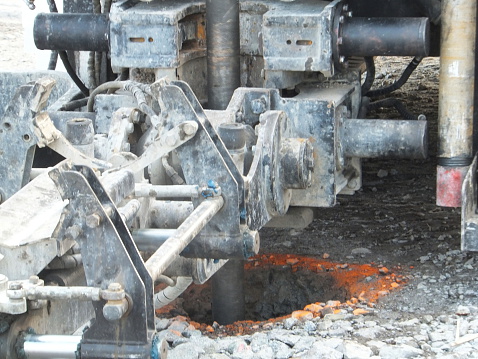Sonic Drilling: A Sound Solution for Overcoming Challenges in the Mining Industry
The mining industry supports our everyday life by providing raw materials and minerals essential in the production of goods, services, and infrastructures that elevate our quality of life.
Over the years, the mining sector faced many challenges in its day-to-day operations that affect overall productivity and efficiency.
One of the most common challenges the mining industry has encountered is getting a quality core sample from the unconsolidated subsurface condition.
With the help of modern technology and engineering, today’s drilling capabilities have become significantly superior and more advanced than the conventional drilling methods.
Sonic drilling, for example, offers a sound solution to many of these challenges with its accuracy, speed, and efficiency in getting superior subsurface information.
This article intends to describe the applications of Sonic technology as a solution to the many challenges in the mining industry and its advantages compared to other standard drilling methods.
What is Sonic Technology?
Sonic technology is an advanced soil penetration technique that utilizes high-frequency, resonant energy generated inside a sonic head to advance a core barrel into subsurface formations.
During the drilling process, the sonic head emanates vibrations that liquefies and loosen the surrounding soil structure’s integrity and allowing for smoother drilling.
After advancing the core barrel, the rig’s telescopic casings are placed over it, enabling core retrieval to take place with no risk of collapse, even in the unconsolidated or fragile ground.
Sonic Drilling for Mining Applications
Sonic works well for a variety of mining applications. It helps mining companies conduct geotechnical investigations, whether it’s an open-pit mine or an underground mine.
It also provides excellent recoveries in soft material and drilling through hard materials like interlayered weathered rock.
Lastly, this technology assists design engineers in determining the number of deposits in an area and the distribution of waste materials that need to be quarried. And using this data, a 3D model of the proposed mine can be created and utilized to plan budgets and schedules.
Advantages of Using Sonic Method in Mining
These distinct advantages of sonic technology over other conventional drilling methods provide miners added control in planning projects and managing resources.
Continuous and Undisturbed Core Sample
One significant advantage of sonic technology is retrieving a continuous and relatively undisturbed sample through any material type, including soil, rock, and construction debris.
The ability of this method to cleanly cut the soil without using a fluid that can dilute the sample allows a near 100 percent core recovery, continuous to the depth. And which means superior subsurface information for decision making.
Faster Penetration Rate
Compared with the standard drilling methods, the sonic technique has a penetration rate of up to three times faster than traditional overburden drilling. Thanks to the combined power of vibration and slow rotation, that allows the casing to quickly advance even through unconsolidated formations.
Reduces Waste by Up to 80%
Sonic technology utilizes an innovative casing advancement system and uses an efficient cutting without using any fluid, which results in reduced waste and drills spoils by up to 80 percent compared with other standard drilling methods. With less than a 1% deviation, drillers and scientists can be sure of the origin of the sample.
Summary
Sonic drilling is a considerable advancement in drilling technology applicable in different industries, including infrastructure, construction, mining, and environmental exploration.
However, despite its distinct capabilities and benefits, sonic technology still has a long way to go as an emerging technology commonly accepted as the best on the market.

